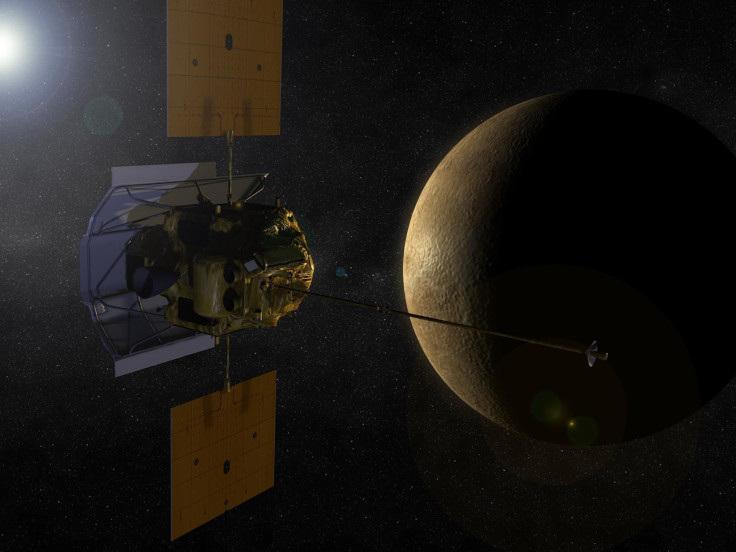NASA Messenger Spacecraft To Crash Into Mercury; A Eulogy For The Planetary Probe

NASA's Messenger spacecraft will end its time as a planetary probe Thursday as it crashes into the very planet it's been studying for the last four years. It's a funeral fit for any spacecraft -- and NASA has been sharing some of the best images and science that Messenger has sent from the first planet.
To celebrate the Mercury mission -- whose name means MErcury Surface, Space ENvironment, GEochemistry, and Ranging -- here's a fictional eulogy, as written by Messenger's "little brother," the New Horizons spacecraft.
Although our orbits have taken us in completely different trajectories -- you to Mercury and I to Pluto -- we started out as projects developed by the Johns Hopkins University's Applied Physics Laboratory. You started out as a Discovery Program mission -- a way for NASA to tap the brightest minds and explore the solar system in an unprecedented fashion -- and the first Mercury probe since Mariner 10, which launched on Nov. 3, 1973. NASA approved your mission to Mercury in 1999 and APL was selected to build you.
There was so much to learn about Mercury -- including what was behind its density, its geologic history, surface features, what made up its core and understanding its magnetic field, its exosphere and what was the composition of its poles. By the time I came around as a New Frontiers mission, you were well on your way to completion. After four years of development you were moved to the Goddard Space Flight Center for some final tests. You spent your last months on Earth at the Astrotech Space Operations before launching from Cape Canaveral atop a Delta II on Aug. 3, 2004. You made a quick flyby of Earth on Aug. 2, 2005, followed by a pair of Venus flybys in 2006 and 2007. You flew around Mercury -- twice in 2008 and a third time in 2009 -- before entering the planet's orbit and beginning your science mission on March 18, 2011.
You weren't just good at your job; you were so great your mission was extended by three years! You helped us better understand Mercury, you were a great photographer and even discovered that the incredibly hot planet had water ice buried deep beneath the poles. When I reach Pluto in July, I hope I'm as successful as you were.
-- New Horizons
"Messenger has at last brought Mercury up to the level of understanding of its sister planets in the inner solar system. Of course, the more we learn, the more new questions we can ask, and there are ample reasons to return to Mercury with new missions," Sean Solomon, director of Columbia University’s Lamont-Doherty Earth Observatory and Messenger's Principal Investigator, said in a statement. On April 30, the planetary probe will end its 11-year mission in a crater on Mercury.
© Copyright IBTimes 2025. All rights reserved.






















